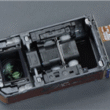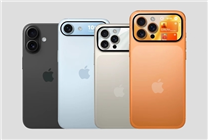Rethinking Phone Design: Insights from OPPO’s Liu Haoran
Key Takeaways
- Liu Haoran critiques the trend of integrating secondary back screens in smartphones.
- He emphasizes the long-term implications, such as increased costs and power consumption.
- Simpler solutions could enhance user experience without unnecessary complexity.
Liu Haoran, the General Manager of OPPO’s Industrial Design Center, recently voiced his reservations regarding the incorporation of back screens in smartphones. His insights provide a thoughtful critique of current design trends and their implications for the future of mobile technology.
Liu believes that the introduction of new features in smartphone design should be approached cautiously. He argues that adding a back screen makes it necessary to consider its long-term viability, which often involves substantial time and resources. This necessity highlights the importance of establishing a clear roadmap for design features before their implementation.
The Pitfalls of Back Screen Integration
Liu expresses a clear disdain for the trend, stating, "I do not like this setting myself." His critique extends beyond personal preference, highlighting the functional challenges that come with such designs. For instance, the implementation of a back screen that captivates initial user interest may not be sustainable in the long run, especially if future upgrades become cumbersome or if user engagement declines. "Once some users like it and there’s no follow-up, this is something you did not think about."
He further elaborates on the concern that incorporating a back screen might be a superficial attempt to differentiate products in an oversaturated market. Liu argues that this approach often leads to unnecessary complexity: "This design always feels that it is specially arranged to find differences." The concern is that the effort invested in enhancing product features could be better allocated elsewhere, focusing on user needs rather than cosmetic differentiation.
Emotional Value vs. Complexity
According to Liu, enhancing emotional value in technology doesn’t necessarily require elaborate designs. “Sometimes a few simple lights can do it, and the emotional perception given to users is similar,” he says. He believes that technology should aim for simplicity and ease of use, rather than trying to impress consumers with complicated features that may not serve a practical purpose.
He reiterates that the focus should not simply be on differentiating products but rather on enhancing the user experience. Liu’s insights suggest that product design should prioritize simplicity, efficiency, and emotional connectivity with the user.
The Drawbacks of a Back Screen
Liu outlines several key drawbacks of integrating a back screen into smartphones:
-
Increased Power Consumption: The additional screen requires more energy, potentially diminishing battery life.
-
Potential for Future Conflicts: As technology evolves, existing features may become obsolete or problematic, complicating future updates or repairs.
-
Elevated Costs: The introduction of a back screen escalates manufacturing expenses and raises the stakes for maintenance costs down the line.
- Functionality Requirements: To justify the existence of a back screen, manufacturers would need to innovate numerous functionalities to prove their value to users, creating unnecessary pressure.
Possible Benefits and Neutral Considerations
Despite his criticisms, Liu acknowledges a few potential benefits of back screens:
-
Customization Opportunities: The addition of a secondary screen provides users with more options for personalization.
-
Contextual Utility: A back screen can offer practical applications in specific scenarios, such as displaying additional information adjacent to the camera.
- Self-Portrait Functionality: Users could leverage a rear camera for more effective self-portraits, enhancing the photography experience.
However, some neutral aspects warrant consideration as well:
-
Notification Convenience: While back screens can facilitate easier notifications, they may also raise concerns about user privacy and lead to household disagreements.
- Questionable Use Cases: The rationale behind using a second screen for conveying small notifications, cartoons, or simple data is still up for debate, especially when primary screens already serve these functions effectively.
Conclusion: A Call for Thoughtful Design
Liu Haoran’s insights compel designers and manufacturers to reassess the approach to feature integration in smartphones. As technology evolves, the demand for innovative solutions should not eclipse the fundamental goal of enhancing user experience. Balancing complexity with simplicity should be paramount in mobile design, ensuring that features align with genuine user needs rather than marketing trends. In a world where user satisfaction drives brand loyalty, thoughtful design choices will ultimately have lasting impact on the future of mobile technology.








